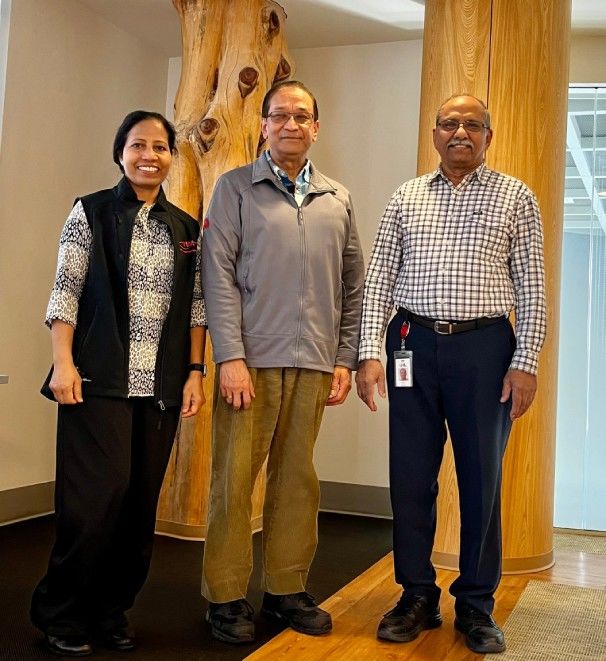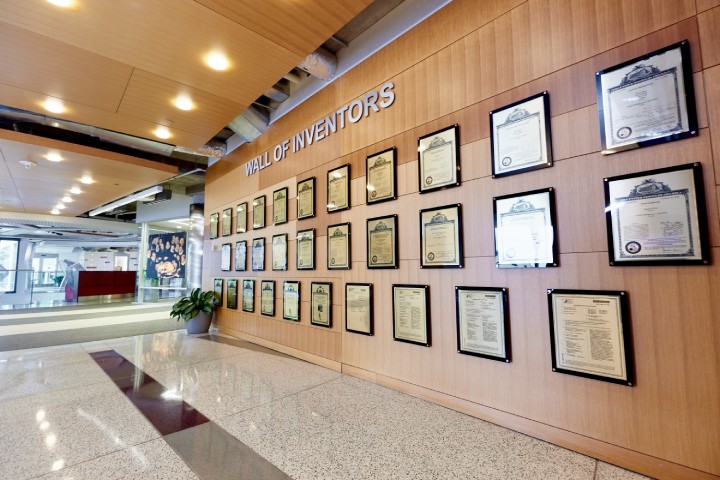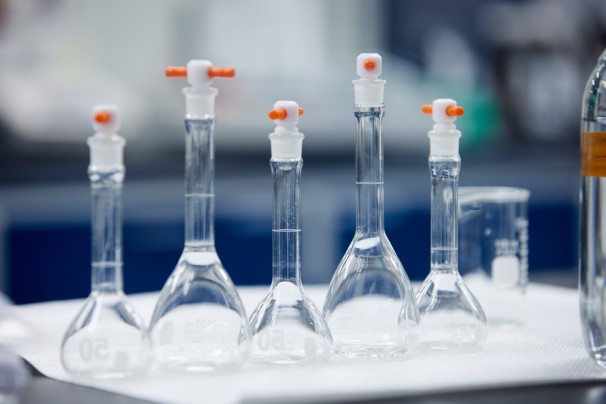Innovation
Cracking the Code: A Conversation with the Researchers Who Figured out How to Synthesize Treprostinil
May 17, 2024
8 Min Read

Neena, Sudersan, and Bala, three Unitherian innovators
The history of the founding of United Therapeutics Corporation (UT) in 1996 is well known to many: it’s a story of Martine and Bina Rothblatt, parents who wanted to save their child’s life.
At the time, what is now known as pulmonary arterial hypertension (PAH) had a five-year mortality rate – a shorter life expectancy than for most cancers. There were very few medical therapies available to treat this rare disease and significant challenges with the only approved therapy at the time. There was also no known cure, outside of lung transplantation for a small minority of patients able to obtain one.
This was the context in which a team of researchers based in Chicago, Illinois, began their journey to figure out how to synthesize an adequate supply of a molecule called treprostinil, an analog of a vasodilator called prostacyclin. Treprostinil had been newly discovered to have promise for the treatment of PAH, but with room temperature stability and a longer half-life than the only existing therapy at the time, it had the potential to enable more accessible treatment options for patients. The research team’s goal: to identify the simplest pathway from the starting materials to final compound to enable production for use in therapies for patients suffering from PAH.
We spoke with three UT team members, whom we call Unitherians, who were part of those early efforts – Dr. Neena Saini, Senior Director, Production, Mr. Bala Bathala, Associate II, Materials Management, and Dr. Sudersan Tuladhar, Lead Research Scientist – to find out more about what started as just another interesting research project and became the focus of their careers.
What Inspires a Chemist
The top three characteristics of those who enter the field of chemistry, according to career websites, are curiosity, tenacity, and pragmatism. Neena and Sudersan prove this true, both sharing their love of chemistry and quest for constant learning. Combined, they have authored or co-authored 75 peer-reviewed studies – including the 2004 article on the synthesis of treprostinil published in The Journal of Organic Chemistry1 – and Sudersan is co-inventor of 23 U.S. patents, including several related to treprostinil preparation and production.
Bala’s journey took a different but equally determined and practical path. He had been a lecturer of philosophy and ethics in India before coming to the United States, and, in fact, he had long dreamed of becoming a police officer. “But I had a Bachelors of Science in Chemistry from a university in India. So, when I came to the United States, I studied pharmacy technology and started working in the pharmaceutical industry,” Bala explained.
Fortuitously, their paths crossed as members of a small team of passionate professionals convened by Professor Robert Moriarty2 in the late 1990s to work on an interesting new research project: figure out how to synthesize a compound with a complex chemistry they had not seen before.
From One Milligram to Kilograms
Organic chemists spend much of their time trying to design and then test the most efficient and effective routes for synthesizing new compounds. “There were three pieces of the puzzle,” Neena explained. “The first two pieces were the starting materials – call them A and B. The third would be the final compound, C, synthesized from the starting materials. We did not have the key to the puzzle, A + B = C, so we designed three different pathways forward to see which one might work.”
The work ahead promised to be challenging. All three team members remember lengthy nights and lots of pizza. But it wasn’t just the free food that inspired their work. Neena remembered a particular Friday evening after a social event: “I didn’t have a car at the time and had to get a ride with someone else. When we were returning at about 1 a.m., I was thinking about the project, and I felt like I was on the cusp of something. I said, ‘don’t drop me at my house, I want to go to the lab.’ I stayed until around 4 a.m., went home to shower and change clothes, and came right back to the lab to continue working.”

United Therapeutics Wall of Inventors featuring the company’s patents and other innovations
Bala and Suderson shared similar recollections, and another aspect of what made the effort so rewarding. “It was like a family; we enjoyed working together. I was attached to the project itself. The work and chemistry was so interesting. I felt ownership. I felt that I had to be part of solving the problem,” Sudersan explained.
As it turned out, Neena was testing the breakthrough synthesis pathway. After months of work, she produced the results they were seeking. “It was so clean. The way treprostinil is formed, it starts with one ring structure and goes to three. With 19 steps, it looks complicated on paper, but in the lab it was a very clean reaction. Nobody believed it could be that clean!” In chemistry, a ring structure refers to a cycle of atoms and bonds in a molecule, and a “clean” reaction relates to the purity of the resulting compound.
They all remember the day they were able to produce the first milligrams of treprostinil, proving the success of the project. “We were so happy!” Neena shared.
Today, United Therapeutics manufactures treprostinil on a kilogram scale for use in our therapies.
Sharing a Purpose
Neena, Sudersan, and Bala all have different memories of when they learned that Martine’s daughter Jenesis was one of the patients who would one day benefit from their work. All concurred that it is very meaningful today to hear from patients directly, who are periodically invited to United Therapeutics to share their stories with staff. “This is not just interesting lab work, but it has direct impact on people’s lives,” Neena said.
Bala’s understanding of the importance of their work then and today is even more personal. “I got pneumonia some years ago and I was not able to breathe. I discovered that I have interstitial lung disease (ILD), and I was told I needed a lung transplant,” Bala explained. “Martine helped me navigate the health system and I wound up being able to manage with therapies and not needing a transplant. I am still working here today because of these team members, because of Martine.”
There was a common theme in their responses to the question of what makes them proud today and excited for the future: United Therapeutics enables innovation. “We were able to reduce the original 19-step synthesis process down to 16, cutting down the reagents, and processing time,” Sudersan explained. “We now integrate green chemistry into our thinking. This is exciting, and links to our public benefit purpose. More than that, the organ manufacturing work we are doing now and the promise ahead of 3-D printing of organs for everyone who might need them – that is inspiring.”

Vials in a United Therapeutics lab
Green chemistry is the design of chemical products and processes that reduce or eliminate the use or generation of hazardous substances, which helps prevent waste, design safter products, and even increase energy efficiency when chemical reactions can be run at room temperature and pressure. See https://www.epa.gov/greenchemistry for more information about the 12 Principles of Green Chemistry.
Learn more about the work United Therapeutics continues to do to improve our current therapies and extend them into new disease applications – including pulmonary hypertension due to interstitial lung disease – and our organ manufacturing efforts at https://www.unither.com.
United Nations Sustainable Development Goals
This project aligns with the UN Sustainable Development Goal 3 – Good Health and Wellbeing.


1 Moriarty RM, Rani N, Enache LA, Rao MS, Batra H, Guo L, Penmasta RA, Staszewski JP, Tuladhar SM, Prakash O, Crich D, Hirtopeanu A, Gilardi R. The intramolecular asymmetric Pauson-Khand cyclization as a novel and general stereoselective route to benzindene prostacyclins: synthesis of UT-15 (treprostinil). J Org Chem. 2004 Mar 19;69(6):1890-902. doi: 10.1021/jo0347720. PMID: 15058934.
2 Professor Moriarty was a professor at the University of Illinois Chicago and founder of Steroids LTD., renamed Synquest Inc., a pharmaceutical R&D company acquired by United Therapeutics in 1999.